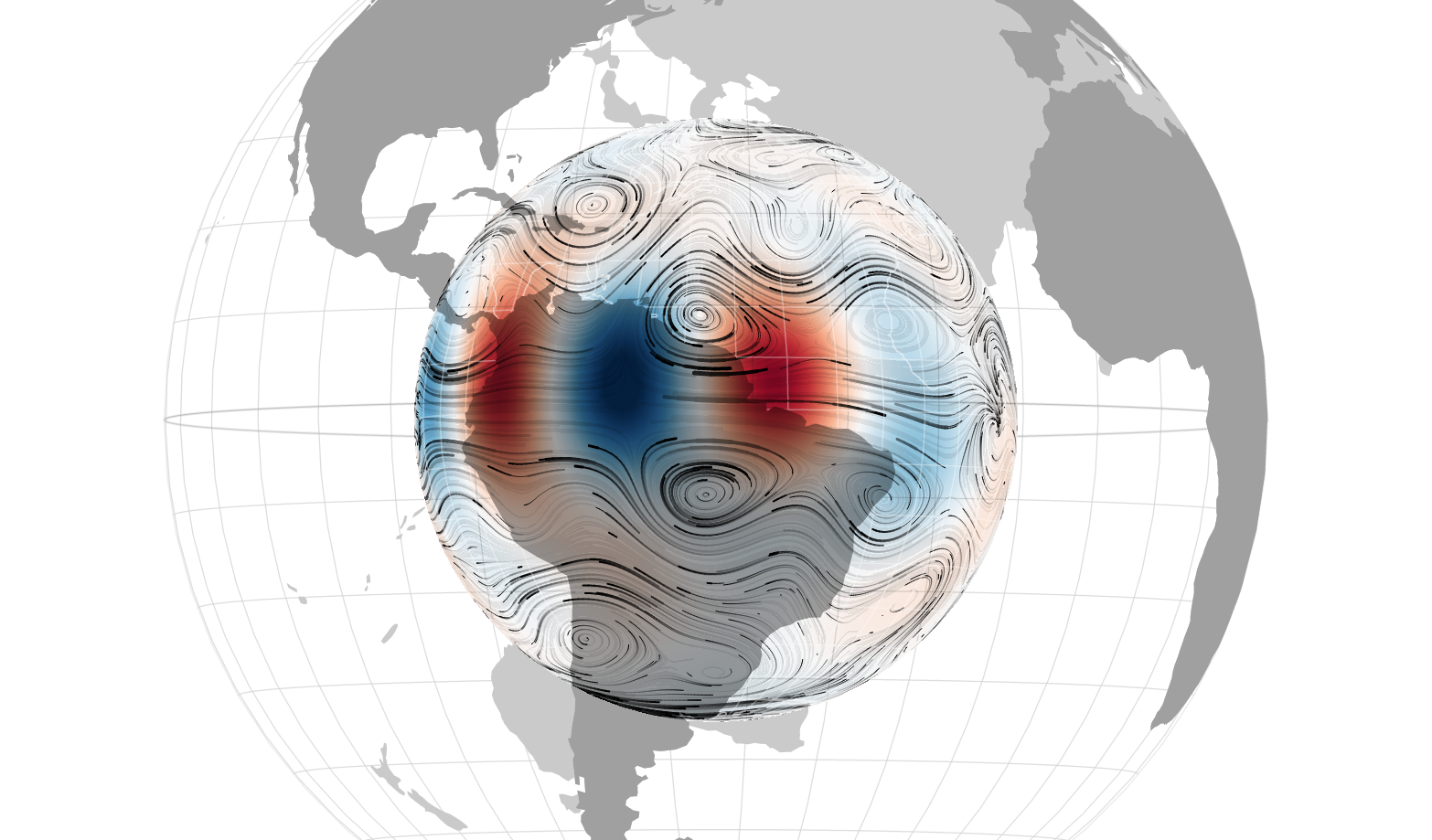The 4D deep Earth core project
The goal of the "4D deep Earth core project" project, supported by ESA, is to improve our understanding of the rapid (interannual) changes in the geomagnetic field, as recorded by the three satellites of the Swarm mission of ESA - as well as earlier satellite missions such as CHAMP and Oersted, and ground-based observatories. Started in Sept. 2019 and planned for 5 years, it gathers partners from European institutes: ISTerre Grenoble; Leeds University; DTU Copenhagen, IPG Paris, CNES Toulouse (and previously ETH Zurich). It involves in particular
- formatting of geomagnetic records, and their cleaning from external (magnetospheric and ionospheric) sources;
- numerical simulations of the geodynamo at cutting-edge parameters;
- modeling of rapid field changes by means of reduced quasi-geostrophic equations;
- re-analysis of magnetic field changes with a data assimilation tool;
- a focus on high latitude jets and the physics on the cylinder tangent to the inner core and aligned with the Earth's rotation axis.

Visualisation of interannual waves in the core, discovered from satellite data (credit: N. Gillet/CNRS). See the webstory by ESA.
This led to the detection of Magneto-Coriolis waves for the first time (see Figure). This dynamics explains sudden changes in the rate of change of the geomagnetic field, associated with pulses in the second time derivative of the field. The overarching goal of the project is to contribute to a better understanding of these dynamics and to map the base state within Earth’s outer core, on top of which hydro-magnetic modes exist. Knowledge of the basic state within the core is expected to advance our understanding of the processes in the core generating and maintaining the Earth’s dynamo. In addition, a first model of the laterally varying electrical conductivity in the region above the Core-Mantle Boundary shall be produced, using a bottom-up approach where the core dynamics is used as a source to sample the mantle conductivity. The relation between such lateral variations and the Large Low Seismic Velocity Provinces will be addressed. It should contribute to improving our understanding of the dynamical and thermo-chemical balances within the deep Earth, and thus lead to better constrain geodynamical models.
